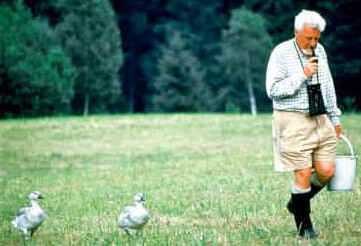Option E: Neurobiology and Behaviour
|
Wk. |
Activities ideas for next year | Work to complete |
|
E.1.1 State that "behavior of animals is related to the environmental context." E.1.4 Explain one example of each of the following types of behavior: migration, grooming, communication, courtship and mate selection, (using species of birds of mammals other than humans). E.1.5 Explain the need for quantitative data in studies of behavior. |
Introduction
and Examples of Behaviour
Watch the video of "Trials of life" making notes about types of communication. Summary Sheet. YOUTUBE_worksheet. migration - artic tern,
swallow, white stork, blue whale |
Syllabus
Link
|
|
E.2.4 Draw the structure of the human eye. :include the sclera, cornea, conjunctiva, eyelid, choroid, aqueous humour, pupil, lens, iris, vitreous humour, retina, fovea, optic nerve and blind spot. E.2.5 Annotate diagrams of human retina. Include names of rod and cone cells, bipolar neurones, ganglion cells and the direction of light movement. E.2.6
Include: E.3.3 Draw the structure of the spinal cord and its spinal nerves to show the parts of a reflex arc. E.3.4 Outline the pupil reflex and one other cranial reflex. E.3.7 Discuss the use of the pupil reflex in testing for brain death. Some discussion about what is meant by death could be included here. E.3.2 Outline the pain withdrawal reflex and one other human spinal reflex. E.3.5 Draw the gross structure of the brain & one function of each part; including: the medulla oblongata, cerebellum, hypothalamus, pituitary gland and cerebral hemispheres. |
Perception
of Stimuli
The five types of receptors: mechano-, photo-, electro-, thermo-, chemoreceptors as ENERGY TRANSDUCERS. The Eye Eye & Retina diagrams to label and annotate
Visual cortex and the path of the optic nerve
The Brain - biochemistry of learning Reflexes. |
Experiment
to test the two point threshold of your skin mechanoreceptors.
|
|
E.3.1 Define innate behavior. E.3.8 Define taxis and kinesis. Reference should be made to the distinction between positive and negative responses. E.3.9 Explain, using one example of each behaviour, how the responses in E.3.8 improve animals' chances of survival. 3 Examples
include: |
Innate
Behaviour
Kineses: The rate of movement is increased by the stimulus but not it's direction. Taxes: Movement of an animal towards or away from a stimulus. |
Maggot
colour experiment
|
|
E.4.1 Define classical conditioning. E.4.2 Outline Pavlov's experiments on conditioning of dogs. 2 The terms unconditioned stimulus, conditioned stimulus, unconditioned response and conditioned response.E.4.3 Define operant conditioning. E.4.4 Outline Skinner's experiments into operant conditioning. 2 The terms operant response and reinforcement should be included.E.4.5 Define imprinting. E.4.6 Outline Lorenz's experiments on imprinting in geese. 2 The terms sign stimulus, species-specific behaviour and innate releasing mechanism should be included.E.4.7 Discuss how the process of learning improves the chances of survival. |
Learned
Behaviour
Classical Conditioning: - eg Pavlov's dogs. lovely mp3 webcast lesson on Classical conditioning Operant Conditioning: - eg Skinnner. Train Skinnner's bird
Imprinting: - eg Lorenz and his geese |
Extension: Biozone links Experience operant conditioning yourself using this link to test if you are a winner. |
|
E.5.1 List three examples of animals that show social behaviour. 1 Suitable examples include honey bees, ants, termites, chimpanzees and naked mole rats. E.5.2 Describe the social organization of honey bee colonies.E.5.3 Discuss the role of altruistic behaviour in social organizations using two examples. |
Social
Behaviour
BeeBehavior http://users.rcn.com/jkimball.ma.ultranet/BiologyPages/B/BeeDances.html Bee Dance language and Orientation
Altruism |
|
| Higher level Extension work. | ||
|
E.6.1 State that the ANS consists of sympathetic and parasympathetic motor neurons. 1 E.6.2 State that the roles of the sympathetic and parasympathetic system are largely antagonistic. E.6.3 State that the ANS serves the heart, blood vessels, digestive system and smooth muscles. E.6.4 Explain the effects of the sympathetic and parasympathetic system by referring to the control of the heart, salivary glands and iris of the eye.E.6.5 Discuss the relationships between the influence of the conscious part of the brain and automatic reflexes as shown by bladder or anus control, meditation and yoga |
Autonomic
Nervous System
Make notes about the autonomic nervous system (ANS), include the sympathetic and parasympathetic, contriol of heart beat, saliva production and iris, also how to consciously control the ANS
|
|
|
E.7.1 State that synapses of the peripheral nervous system (PNS) are classified according to the neurotransmitter used, including acetylcholine and noradrenaline. 1 E.7.2 Explain how presynaptic neurons can either encourage or inhibit postsynaptic transmission by depolarization or hyperpolarizaton of the postsynaptic membrane. 3 E.7.3 Outline how pain is sensed and how endorphins and enkephalins can act as painkillers. 2 E.7.4 Outline the symptoms of Parkinson's disease and the involvement of dopamine. 2 E.7.5 Explain that psychoactive drugs affect the brain and personality by either increasing or decreasing synaptic transmission. 3 An outline of the ways synaptic transmission can be increased or decreased is expected. E.7.6 Discuss the behavioural effects of the excitatory psychoactive drugs nicotine, cocaine and amphetamines. 3 Refer to "crack" when dealing with cocaine and "ecstasy" MDMA (methylenedioxymethamphetamine) as a derivative of amphetamines. nicotine, E.7.7 Discuss the behavioural effects of the inhibitory psychoactive drugs benzodiazepines, cannabis and alcohol. 3 Examples of benzodiazepines are Valium™ and Temazepam™. benzodiazepines, |
Synapse
Details
|
|
| Extn |
